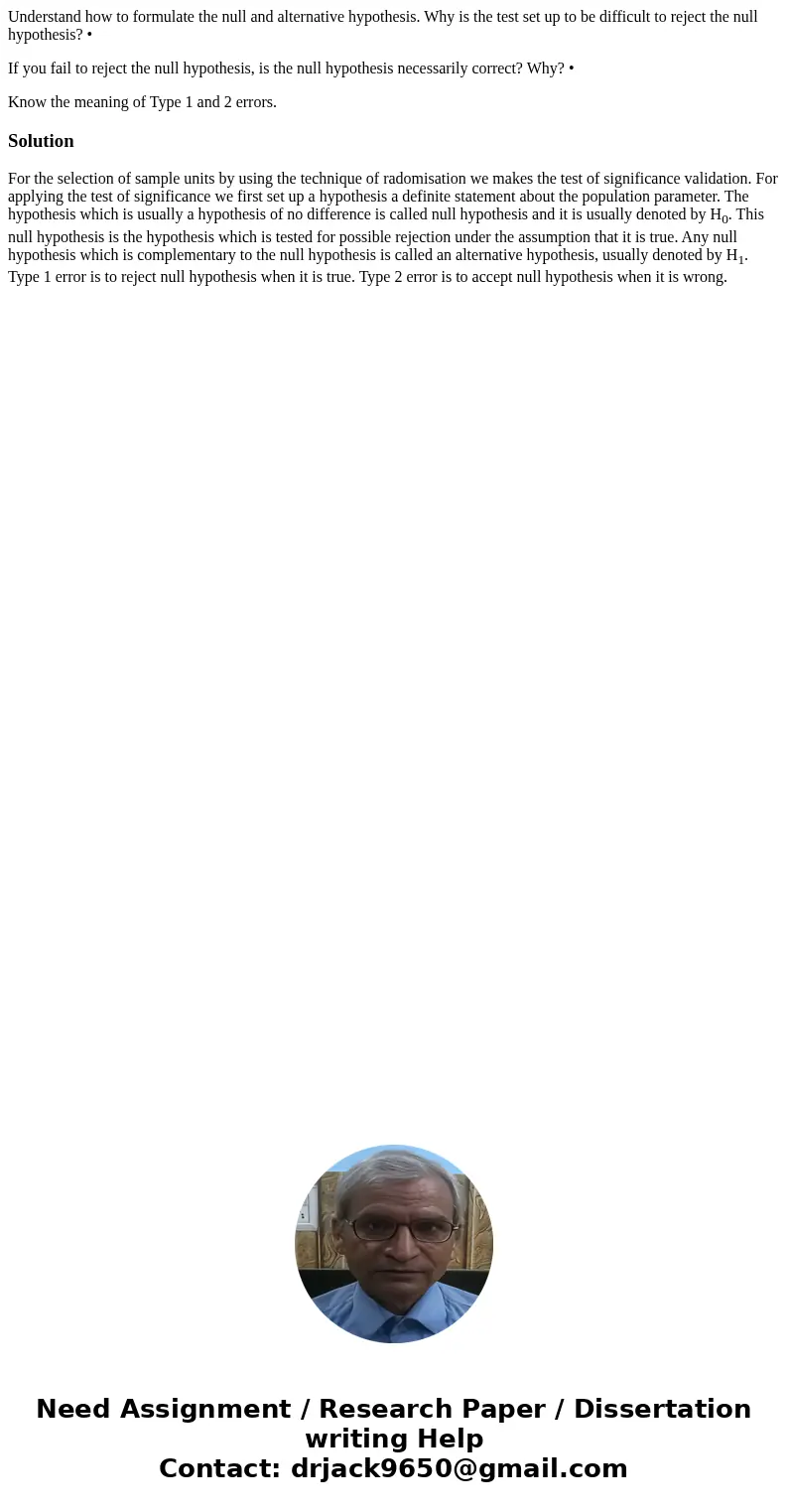Understand how to formulate the null and alternative hypothe
Understand how to formulate the null and alternative hypothesis. Why is the test set up to be difficult to reject the null hypothesis? •
If you fail to reject the null hypothesis, is the null hypothesis necessarily correct? Why? •
Know the meaning of Type 1 and 2 errors.
Solution
For the selection of sample units by using the technique of radomisation we makes the test of significance validation. For applying the test of significance we first set up a hypothesis a definite statement about the population parameter. The hypothesis which is usually a hypothesis of no difference is called null hypothesis and it is usually denoted by H0. This null hypothesis is the hypothesis which is tested for possible rejection under the assumption that it is true. Any null hypothesis which is complementary to the null hypothesis is called an alternative hypothesis, usually denoted by H1. Type 1 error is to reject null hypothesis when it is true. Type 2 error is to accept null hypothesis when it is wrong.

 Homework Sourse
Homework Sourse